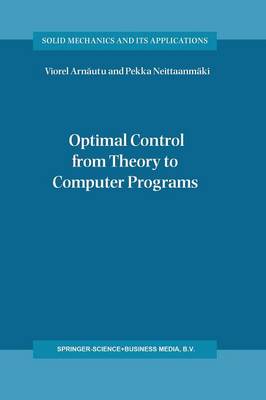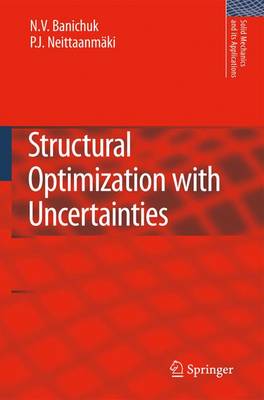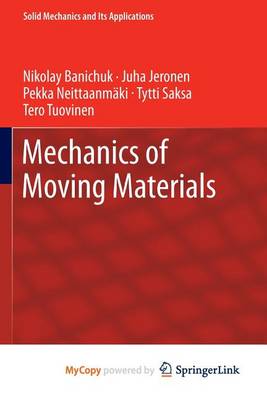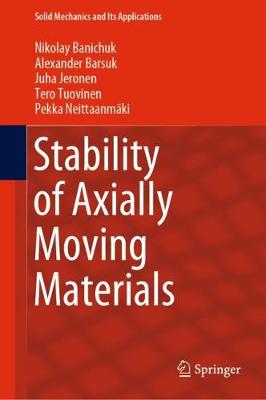Solid Mechanics and Its Applications
4 primary works
Book 111
Optimal Control from Theory to Computer Programs
by Viorel Arnautu and Pekka Neittaanmaki
The text is addressed to students and graduates in Mathematics, Mechanics, Applied Mathematics, Numerical Software, Information Technology and Engineering. It can also be used for Master and Ph.D. programs.
Book 162
Structural Optimization with Uncertainties
by N. V. Banichuk and Pekka Neittaanmaki
Book 207
Mechanics of Moving Materials
by Nikolay Banichuk, Juha Jeronen, and Pekka Neittaanmaki
This book deals with theoretical aspects of modelling the mechanical behaviour of manufacturing, processing, transportation or other systems in which the processed or supporting material is travelling through the system. Examples of such applications include paper making, transmission cables, band saws, printing presses, manufacturing of plastic films and sheets, and extrusion of aluminium foil, textiles and other materials.
The work focuses on out-of-plane dynamics and stability analysis for isotropic and orthotropic travelling elastic and viscoelastic materials, with and without fluid-structure interaction, using analytical and semi-analytical approaches. Also topics such as fracturing and fatigue are discussed in the context of moving materials. The last part of the book deals with optimization problems involving physical constraints arising from the stability and fatigue analyses, including uncertainties in the parameters.
The book is intended for researchers and specialists in the field, providing a view of the mechanics of axially moving materials. It can also be used as a textbook for advanced courses on this specific topic. Considering topics related to manufacturing and processing, the book can also be applied in industrial mathematics.
Book 259
Stability of Axially Moving Materials
by Nikolay Banichuk, Alexander Barsuk, Juha Jeronen, Tero Tuovinen, and Pekka Neittaanmaki
In the main part of the book, the fundamentals of the theory of axially moving materials are presented in a systematic manner, including both elastic and viscoelastic material models, and the connection between the beam and panel models. The issues that arise in formulating boundary conditions specifically for axially moving materials are discussed. Some problems involving axially moving isotropic and orthotropic elastic plates are analyzed. Analytical free-vibration solutions for axially moving strings with and without damping are derived. A simple model for fluid--structure interaction of an axially moving panel is presented in detail.
This book is addressed to researchers, industrial specialists and students in the fields of theoretical and applied mechanics, and of applied and computational mathematics.



